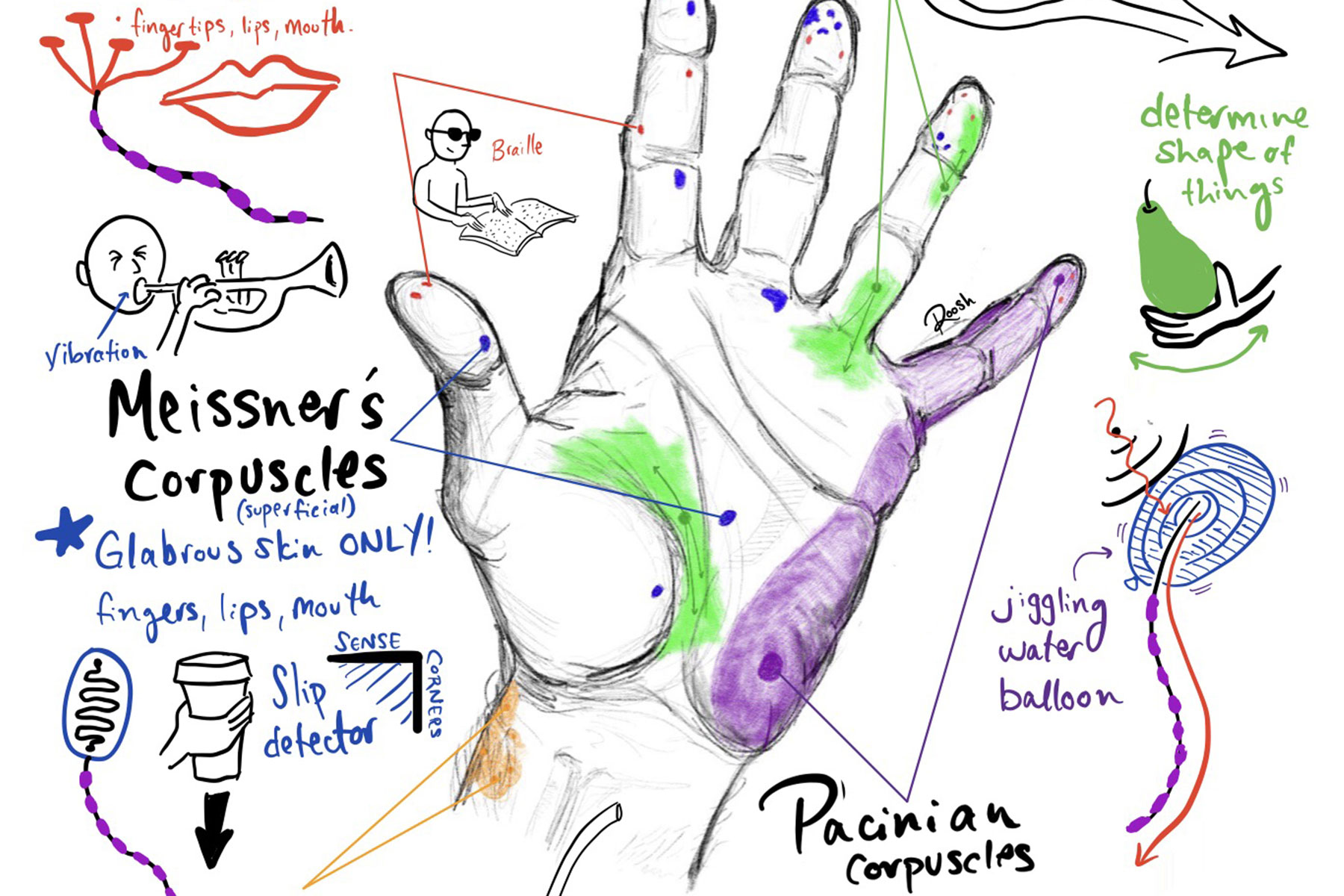
Rushi Patel’s notes on the trochlear nerve look a little different than those of his classmates.
Patel knows “trochlea” is the Latin word for pulley, and he remembers it runs from the back of the brainstem to the top of the eye. Rather than writing out the definition, however, he begins to draw. A pencil sketch of a pulley system soon stretches across the page, connecting a big eyeball to a brain.
Patel just finished his first year of medical school at the Medical College of Wisconsin (MCW). Today, just like back in grade school and high school, his notebooks are full of drawings.
“Ever since I was a kid, I always thought about things in pictures and not words,” Patel said.
As he got older, classes got harder and textbooks had more words and less pictures, Patel found sketching in his notebooks to be the best fit for his visual learning style.
Originally from Detroit, Patel received his undergraduate degree from the University of Michigan and then moved to Madison to work at Epic. After two years there, he began medical school at MCW.
Coming into MCW, he wasn’t sure he’d be able to make his unique visual learning style work with the complexity of subject matter in medical school. After about a month of struggling to learn like his classmates, memorizing terms through vocabulary charts, Patel decided to go back to sketching in his notebook. Finally, he was able to clear away the jumble of words in his head.
“It worked. Things stuck. It wasn’t like I was drowning anymore,” added Patel.
The trick for him, he has discovered, is to identify the root of a term to remember its meaning. Many words in anatomy have Latin roots, like the trochlear nerve, for example. The world trochlear itself doesn’t have much meaning for Patel, but he can picture a pulley and remember its anatomical function – operating a muscle on the top of your eye.
Patel said his method of studying takes a lot of time, but it’s worth the effort and he enjoys it. He spends an hour drawing pictures and figures to illustrate Piaget’s stages of child development, but now he remembers and understands the information and can use his sketch to explain the concept to others.
“It’s all on one page,” Patel said. “I can look back on this picture in my mind, and I can remember it that way instead of through words.”
In the future, Patel aims to enter the field of pediatrics where he can incorporate his visual skills to teach and connect with kids who learn like him.
“I want to make sure that when I give directions to kids I can give it to them in a visual way, especially for kids like me who don’t understand things with just words,” said Patel.
Medical College of Wisconsin
Originally published by the Medical College of Wisconsin as Visual Learning in Medical School














